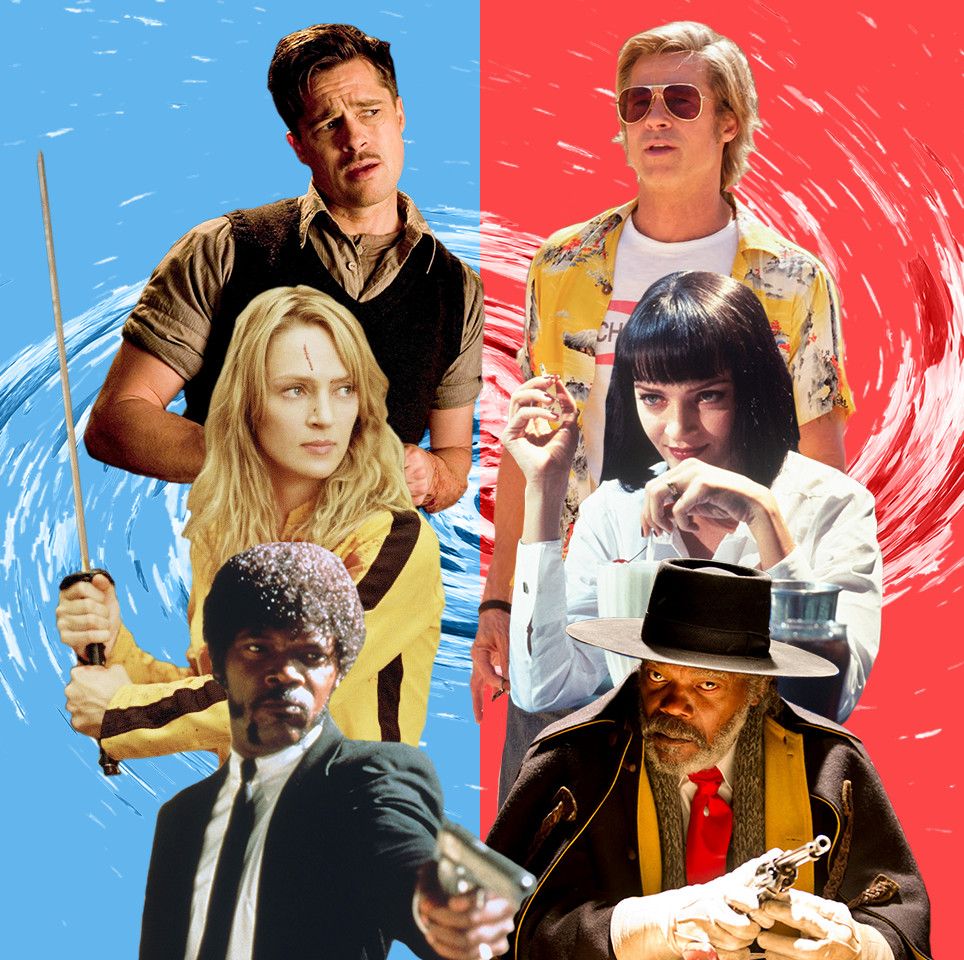Fans of Quentin Tarantino have spent decades scouring his movies for everything from Easter Eggs to homages to classic or contemporary cinema to self-referential nods to his own films. Some of these allusions are obvious, some are more subtle, and anyone who looks closely enough might notice the threads connecting all of Quentin Tarantino's movies together.
Take for example the dinner scene at Jack Rabbit Slims in Pulp Fiction: Mia Wallace, played by Uma Thurman, explains the plot of a TV pilot she was in. Her description of a group of female secret agents sounds oddly familiar if you've ever seen another Quentin Tarantino film called Kill Bill. Wallace says that she played a character—Raven McCoy—who was the deadliest woman in the world with a knife (the description given to Thurman's character in Kill Bill). And, of course, during the Pulp Fiction scene Wallace is talking to Vincent Vega, a character who shares the last name, and is related to, Mr. Blonde (a nickname given to the character Victor Vega) from Reservoir Dogs.
There are also brands that pop up throughout Tarantino's movies like Big Kahuna Burger and Red Apple Cigarettes. And if you look closely, Crazy Craig Koons in Django Unchained is an ancestor of Captain Koons, Christopher Walken's Pulp Fiction character. Pete Hicox, Tim Roth's character in The Hateful Eight is related to Michael Fassbender's Archie Hicox in Inglourious Basterds.
Tarantino himself confirmed the existence of this shared universe in 2017, explaining to an Australian news outlet:
There's the realer than real universe, alright, and all the characters inhabit that one. But then there's this movie universe. And so From Dusk Till Dawn, Kill Bill, they all take place in this special movie universe. So basically when the characters of Reservoir Dogs or Pulp Fiction, when they go to the movies, Kill Bill is what they go to see. From Dusk Till Dawn is what they see.
So by that logic, the hierarchy of the Tarantino shared universe works as so:
The Realer Than Real World Universe includes: Reservoir Dogs, True Romance, Pulp Fiction, Death Proof, Inglourious Basterds, Django Unchained, and The Hateful Eight.
The Movie Movie Universe includes: Natural Born Killers, From Dusk Till Dawn, and Kill Bill.
If you want to dig in further, then you could assume that the movies we see Inglorious Basterds characters appearing in are part of The Movie Movie Universe. And Mia Wallace's Fox Force 5 would also be part of this sub universe. The same goes for the movies that Stuntman Mike from Death Proof appeared in.
Now that we've established that, it's clear how Once Upon a Time in Hollywood fits into this movie universe. And what's interesting is that this is one of those Tarantino films that simultaneously inhabits both.
Leonardo DiCaprio's Rick Dalton, Brad Pitt's Cliff Booth, and Margot Robbie's Sharon Tate, for example, live in The Realer Than Real Universe. But, the movies and TV shows that they star in—many of which we see in OUATIH—exist in The Movie Movie Universe.
So, you might wonder, how do DiCaprio and Pitt appear multiple times throughout this universe? It's possible that like the connections of Koons and Hicox, DiCaprio and Pitt's multiple characters are distant relations to each other. Also, there's a small line in Once Upon a Time in Hollywood that was pretty interesting. At one point, a character mentions that Cliff Booth was a "war hero." It's possible that Cliff Booth is somehow also Pitt's Lt. Aldo Raine—the timing could put him somewhere in his late 40s. Or more likely that the two men are related to each other.
But, if you stick around through the mid-credit scene in OUATIH, Tarantino gives us another fun Easter Egg, connecting his movies together. Rick Dalton appears in an advertisement for Apple Cigarettes, which firmly places OUATIH in the The Realer Than Real Universe.
Every single one of Tarantino's films have existed as a synthesis of popular culture for the last century. His films explore our relationship to movies and television and how they influence our perception of the real world. He's also long used these same films as a way to create his own revisionist history—crafting his own cinematic version of world events.
OUATIH is, in many ways, the perfect meeting point of these themes, where one event in Hollywood on August 8, 1969 fundamentally marked a turning point between old Hollywood and the new. His film's revision of the murder of Sharon Tate and the fate of the Manson Family is the culmination of his career-long obsession with the history of Hollywood and movie-making. And that perfectly explains the title of this movie, the beginning of a story, the beginning of New Hollywood where Tarantino, as a filmmaker, exists.
Matt Miller is a Brooklyn-based culture/lifestyle writer and music critic whose work has appeared in Esquire, Forbes, The Denver Post, and documentaries.













